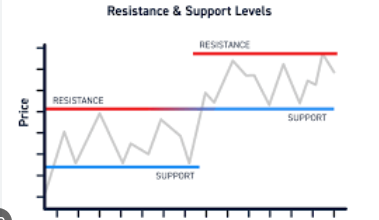Transforming Energy Management with Risk and Compliance Software: The Key to Sustainable Growth

Energy management moves from a “cost-cutting initiative” to a strategic imperative as more pressure is placed on businesses to not only reduce energy consumption but also to cut associated costs while meeting environmental regulations. Within the interface of sustainability and technology, risk and compliance software revolutionizes how organizations drive energy efficiency, compliance, and operational resilience.
Here’s how forward-thinking companies use these tools to create proactive, integrated approaches toward energy management that unlock both sustainability and profitability.
Energy Management: More Than Cutting Costs
Energy management conventionally meant reducing utility bills and improving equipment efficiency. Businesses today, however, see it as far more wide-ranging. Today, energy management stands at the center of attaining ESG goals, staying compliant with regulations, and making operations resilient.
The transformative process in the organizations is aided by risk and compliance software, which will make the organizations aware of these inefficiencies, monitor usage patterns, and move their energy strategy in tandem with changing legal and sustainability demands.
FOR INFORMATIVE CONTENT VISIT.. : Corporate Gifts
Role of Risk and Compliance Software in Energy Management
Real-time Monitoring and Data Integration
Modern risk and compliance software offered through ENERGY MANAGEMENT systems gives businesses real-time data on energy usage, emissions, and cost. It enables the identification of areas of inefficiency, shows progress toward sustainability targets, and provides a firm basis for management decisions.
For instance, a manufacturing facility can trace energy-intensive processes and compare them to benchmarks for the purpose of adjusting operations to decrease consumption during peak hours.
Proactive Risk Identification
Energy risks encompass volatile energy prices, supply disruption, or equipment failure and significantly affect operations. Risk and compliance software provides the assessment and mitigation of these enterprise risks.
Predictive analytics tools integrated into the software predict impending disruptions, allowing businesses to implement renewable sources of energy or install backup solutions.
Simplified Regulatory Compliance
Energy legislation is becoming more and more intricate, with organizations needing to keep a tab on almost everything, showing that sustainability laws and regulations are followed. Risk and compliance software automates this process to ensure timely reporting and prevents non-compliance penalties.
For example, for businesses bound by the carbon trading schemes, they can track emissions data, calculate credits, and do reports for compliance with limited manual inputs.
Cross-Department Collaboration
Because energy management may involve myriad stakeholders, including operations, finance, and sustainability teams, risk and compliance software offers a single forum in which these departments can share their thoughts, collaborate, and coordinate goals.
Why an Integrated Approach Is Becoming a Business Imperative
As the landscape continues to evolve, there is little room for the siloed management of energy anymore. Businesses should combine their energy approaches with wider risk and compliance frameworks in order to offer effective solutions to the emerging challenges.
Alignment of Energy Goals with ESG
Risk and compliance software enables them to link energy performance metrics with ESG objectives such as carbon neutrality or water conservation. By focusing their energy strategies on corporate sustainability targets, organizations can improve brand reputation and access environmentally conscious investors.
Balancing Cost with Compliance
Energy management tends to represent a trade-off between cost efficiency and regulatory compliance. An integrated suite of software tools enables businesses to optimize both-safeguarding cost savings without compromising on legal obligations or sustainability commitments.
Preparing for Climate Risks
Climate change poses great risks to energy infrastructure, from extreme weather events to resource scarcity. Risk and compliance software puts businesses in a position to assess their vulnerabilities, create contingency plans, and invest in renewable energy solutions that enhance their resilience.
Leverage Technology to Stay Ahead
Integration of sophisticated technologies like AI, ML, and IoT is redefining the possibilities in energy management.
AI-Driven Insights
AI-driven risk and compliance software can sort through energy data to find waste, anticipate future consumption patterns, and suggest ways to optimize operations.
IoT for Real-Time Adjustments
IoT-enabled sensors track energy usage at granular levels and provide real-time insights that are actionable. For instance, IoT devices can automatically turn off lights or any HVAC system based on occupancy to reduce wastes without compromising comfort.
Blockchain for Transparency
Blockchain serves to bring more transparency into energy transactions, especially around renewable energy markets. Through this regard, businesses are now able to validate the credibility of green energy certificates with risk and compliance software to ensure procurement truly meets sustainability objectives.
The Future of Energy Management
As energy markets become more volatile and environmental expectations rise, businesses must adopt innovative approaches to energy management. Risk and compliance software will play a central role in this evolution, enabling organizations to:
Transition to renewable energy sources seamlessly.
Predict and mitigate energy-related risks.
Achieve and exceed regulatory and sustainability targets.
Conclusion: The Power of Integration
Energy management is no longer a stand-alone initiative; it’s a strategic pillar to resilient and sustainable business operations. By integrating energy management with risk and compliance software, organizations can navigate the complexities of today’s energy landscape while positioning themselves for long-term success.
Investment in advanced tools and expertise is not an option but an imperative for any business ready to take the lead in a sustainable future. But, really, the question remains-how one will use technology and strategy to change the perspective in energy management today.






